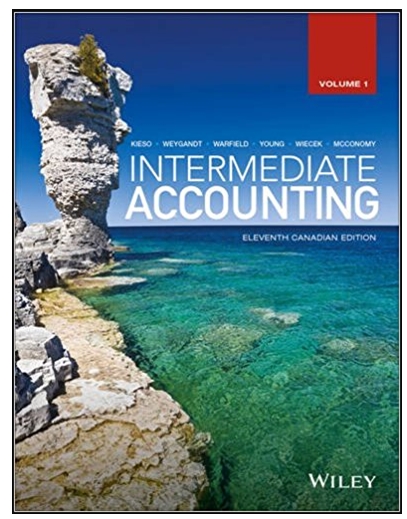On March 10, 2017, Lucas Limited sold equipment that it purchased for $192,000 on August 20, 2010.
Question:
On March 10, 2017, Lucas Limited sold equipment that it purchased for $192,000 on August 20, 2010. It was originally estimated that the equipment would have a useful life of 12 years and a residual value of $16,800 at the end of that time, and depreciation has been calculated on that basis. The company uses the straight-line method of depreciation and prepares its financial statements under IFRS.
Instructions
(a) Calculate the depreciation charge on this equipment for 2010 and for 2017, and the total charge for the period from 2011 to 2016, inclusive, under each of the following six assumptions for partial periods:
1. Depreciation is calculated for the exact period of time during which the asset is owned. (Use 365 days for your base.)
2. Depreciation is calculated for the full year on the January 1 balance in the asset account.
3. Depreciation is calculated for the full year on the December 31 balance in the asset account.
4. Depreciation for a half year is charged on plant assets that are acquired or disposed of during the year.
5. Depreciation is calculated on additions from the beginning of the month following their acquisition and on disposals to the beginning of the month following the disposal.
6. Depreciation is calculated for a full period on all assets in use for over half a year, and no depreciation is charged on assets in use for less than half a year. (Use 365 days for your base.)
(b) Briefly evaluate the above methods in terms of basic accounting theory and how simple the methods are to apply.
(c) Calculate straight-line depreciation under ASPE only for assumption 1 if the asset has a physical life of 13 years and a salvage value of $1,000. Round to the nearest dollar.
Financial StatementsFinancial statements are the standardized formats to present the financial information related to a business or an organization for its users. Financial statements contain the historical information as well as current period’s financial... Salvage Value
Salvage value is the estimated book value of an asset after depreciation is complete, based on what a company expects to receive in exchange for the asset at the end of its useful life. As such, an asset’s estimated salvage value is an important...
Step by Step Answer:

Intermediate Accounting
ISBN: 978-1119048534
11th Canadian edition Volume 1
Authors: Donald E. Kieso, Jerry J. Weygandt, Terry D. Warfield, Nicola M. Young, Irene M. Wiecek, Bruce J. McConomy





